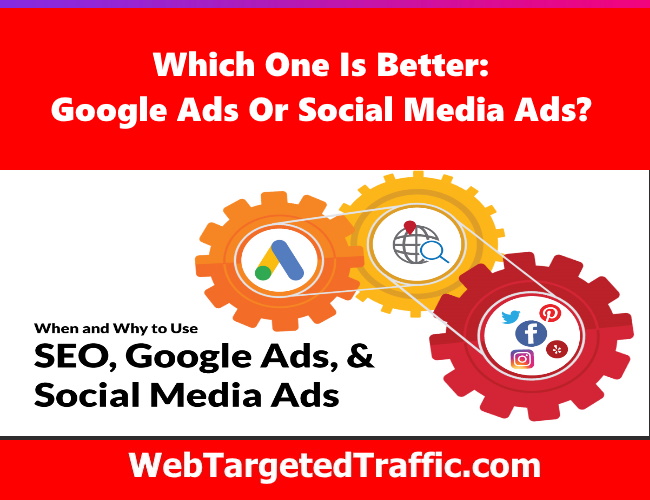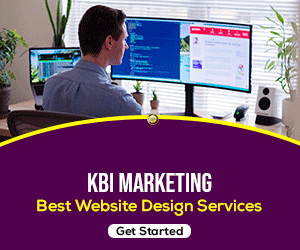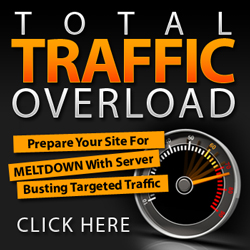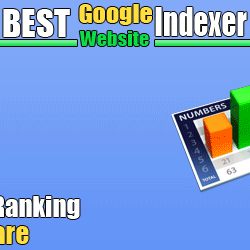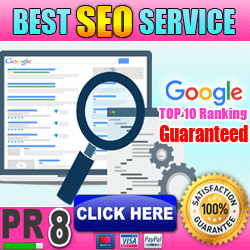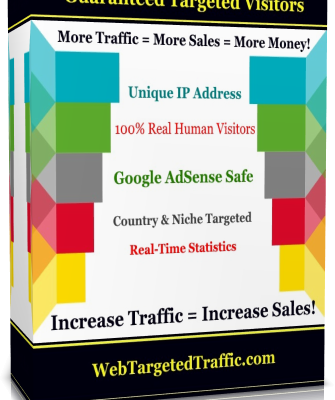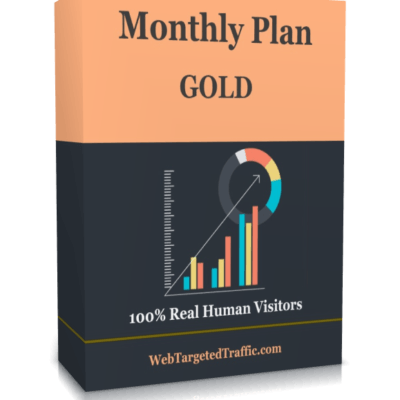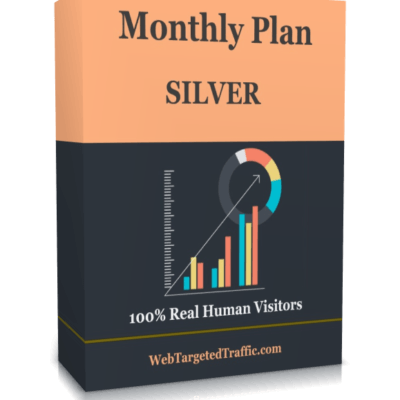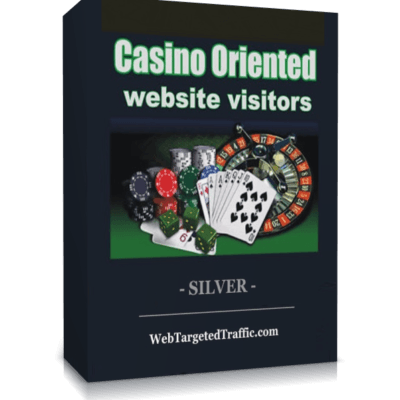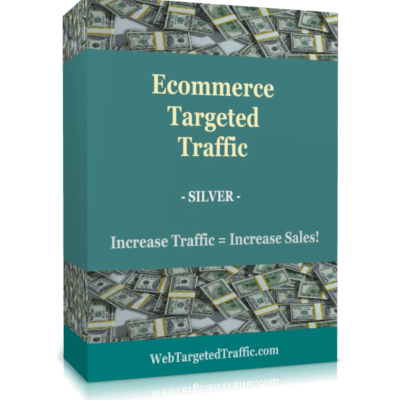Google Ads can be faster to get started with and have a wider potential reach than Facebook Ads, but Social Media Ads can offer more nuanced targeting with its pixel and potentially much more powerful tracking insights than Google Ads.
Table of Contents
What is social media advertising?
Advertisements given to potential customers on social media platforms are known as social media advertising or social media targeting.
Social networks use user information to provide highly relevant adverts based on interactions inside a platform. When the target market matches the demographics of a social platform’s users, social advertising can result in notable gains in conversions and sales at a cheaper cost of acquisition.
Google Ads Best Practices and Tips
With over 4 billion searches per day, users flock to the site looking for products, services, answers to questions, and so much more, making it a necessary channel for advertisers around the world.
What’s my campaign objective?
The campaign objective for any campaign should always be to generate a return on ad spend (ROAS), whether that is directly from an e-commerce shop on your website, through converted leads or phone calls generated from your content, or indirectly by increasing brand awareness to lead to later business (usually via YouTube Ads and Display Ads).
How much should I spend?
Our best advice to any new advertiser is to start with a smaller daily budget in the first month, around £5-£20 per day depending on how competitive the industry is. This will provide initial data to enable you to optimise the account whilst it’s infancy, but not too much that you’re overwhelmed and don’t know where to start!
- 1 x campaign (minimum) – Group services into campaigns. For example, a law firm might want a campaign for each sector such as family law, wills, personal injury, etc. Budgets, locations, and extensions are all set at campaign levels. You wouldn’t want everything in one campaign as it would hinder relevancy and lessen the control you have over sectors and budgets.
- 2-5 (minimum) ad groups – These should be grouped into themes. For example, high heels, trainers, and wedding shoes.
- 1-5 relevant keywords – Don’t over complicate keywords. Simply research what your customers are searching in Google’s keyword planner, Google search bar, or tools like SEMrush are helpful too. Use ‘phrase match’ or ‘exact match’ types initially until you know the terms that are generating business.
- 2-3 text ads and one responsive ad – Text ads are made up of three headlines and two descriptions, whereas responsive search ads are made up of 5-15 distinct headlines and up to four descriptions. These are automatically optimised by Google to ensure the best ad impact and performance. The trick with RSA (responsive search ads) is to ensure sure you are including the keywords that the user is searching for in the ad copy, along with a call to action, selling points, promotional discounts, and your brand name. Also, be sure to check all headlines and descriptions make sense individually and in a combination.
Google Ads keyword and match types explained
We know that having four different types of keyword targeting makes Google Ads daunting and confusing, so we’re going to explain these keyword match types simply to enable you to pick the right one for you.
- Broad Match – This is the broadest way of targeting, which is usually where new Google advertisers go wrong. An example is one of our previous clients’ Google Ads accounts promoting car body repairs. They were showing for terms that included anything related to repairs or body (doesn’t need to be car specific). So, if someone searched “dead body repairs,” the ads would also show. Hopefully, no one would search for this, but it just shows how this can affect CTR and give a poor experience. Another example is the broad keyword is ‘gym shorts’ and the ads for show up for ladies’ gym shorts, men’s gym shorts, children’s gymnastics shorts, and even weightlifting gym shorts.
- “Phrase Match” – If you were to use the keyword “Torquay pubs” the ad would still show for “cosy Torquay pubs” and “local Torquay pubs,” but wouldn’t show “nice pubs in Torquay”. You see how “Torquay pubs” needs to be included in that order, and additional words could be added at the start or end. This makes phrase match much more targeted than broad, but more flexible than exact match.
- [Exact Match] – If you use keywords that are an exact match, then your ads will only show to people searching that exact keyword. PLUS, misspellings, singular or plural forms, close variants such as adding of the word ‘for’, abbreviations, accents, or reordered words. For example, if you used [ladies shoes] as an exact match, the ad would still show for someone searching ‘shoes ladies’, “shoes for ladies,” or [lady’s shoes].
You can find out more information on keywords types, from Google themselves.
Many businesses are leveraging the strengths of advertising on Google and Facebook Ads in concert to achieve maximum visibility, increase leads and sales, and find new customers, adopting different strategies that align with the functionality of each platform and seeing remarkable return on their advertising spend.
Google Ads, formerly known as Google AdWords, is the world’s largest and most popular PPC advertising platform. It is so widely used, it has become synonymous with the term “paid search.” The two terms are used interchangeably, even though other platforms such as Bing Ads work in a similar way.
Paid search focuses on the targeting of keywords and the use of text-based advertisements. Advertisers using Google bid on keywords – specific words and phrases included in search queries entered by Google users – in the hopes that their ads will be displayed alongside search results for these queries. Each time a user clicks on an ad, the advertiser is charged a certain amount of money, hence the name “pay-per-click advertising.” PPC bidding and bid optimization is a complex topic, and beyond the scope of this guide, but essentially, users are paying for the potential to find new customers based on the keywords and search terms they enter into Google.
Facebook Ads: Paid Social
Facebook Ads is a prime example of what is known as “paid social,” or the practice of advertising on social networks. With the highest number of monthly active users (or MAUs) of any social network in the world, Facebook has become a highly competitive and potentially lucrative element of many business’ digital advertising strategies.
Although advertising on Facebook can be thought of as similar to Google Ads, in that advertisers using both platforms are essentially promoting their business via the Internet, this is where the similarities end. Unlike paid search, which helps businesses find new customers via keywords, paid social helps users find businesses based on the things they’re interested in and the ways in which they behave online.
When it comes to the primary difference between Google and Facebook Ads, you can think of it this way: Google Ads helps you find new customers, while Facebook helps new customers find you.
Instagram Ads
Instagram ads are focused on creating demand just like Google’s Display Network. With this, marketers use interest-based and demographic targeting to have their ads appear in placements on and off-platform. This advertisement does not need any certain search. Instagram Ads should be used on different stages of sales funnel to drive users all the way. Through Instagram ads, you can reach your target audience also on Messenger, Instagram and other participating apps.
But Instagram ads are found less effective here. Because people’s purpose of using these platforms is not for looking for any product or service. But they are looking for updates from a friend. Still, Instagram is useful for creating an audience base. Building brand awareness is considered as the long-term goal of any strategy.
Pros of social media ads
Below are some of the benefits of social media advertising:
1. Increased Brand Awareness
It has been proven that promoting on social media enhances brand recognition. Companies can communicate with their potential customers on the familiar ground by regularly publishing on social media sites. This continual connection results in giving the impression of trustworthiness and a willingness to listen to what clients say. Customers familiar with your brand are more inclined to tell their friends and family about it, expanding your brand’s reach. The brand should not continually hammer home its presence but should be subtle enough to make an impression.
2. Brand Loyalty Increased
Any business necessitates a loyal customer base to keep afloat. New customers are welcome gains, but without loyal consumers, conversion rates would be bleak to non-existent. Customers can express their opinions and feelings regarding services and items offered by advertising on social media. Client happiness rises tremendously as a result of listening to customer feedback, and brand loyalty increases as well. Customers will be happier with your turnaround time and will value your business more.
3. Lower Marketing Expenses
Social media marketing does not require a large sum of money compared to traditional marketing. Traditional marketing strategies fade out in favor of less resource-intensive methods as the corporate landscape evolves. As a result, using social media to sell products and services is a practical approach for businesses to cut costs. In terms of investment, social media do the majority of the work. The company needs a consistent theme, tone, and marketing plan to use the platforms. The expenditures are significantly lowered because more consumers may be addressed with the same monthly budget.
Cons of social media ads
1. Competitors who are negative and unprofessional
The growth of scammers, trolls, and hackers on social media is a significant problem. While many people utilize the platforms to remain in touch or promote their businesses honestly and respectfully, others try to exploit or harass others online.
This issue can manifest itself in the shape of derogatory remarks or slanderous communications, or it can take the form of a cyber-attack in which someone attempts to get into your account or steal vital information.
The culprit may be one of your competitors. To separate out from the mass, businesses should act professionally on social media and use strategy and clever advertising. However, it is not unheard of for a company to use negative techniques to smear their competitors’ reputations.
2. Evaluation
While the return-on-investment in terms of online sales created by social media advertising is straightforward to calculate, there are some less obvious advantages. It isn’t easy to quantify and evaluate the brand visibility and reputation that social media can provide. It’s tough to say how social media influences in-store sales.
3. Platforms are limited
Even though social media may reach a large audience, marketing is confined to sites such as Facebook, Instagram, LinkedIn, and Twitter. Your marketing efforts will be harmed if any of these platforms go down. Similarly, you can only contact those who have accounts on those sites, which means you’re missing out on potential customers who don’t use them.
This is in contrast to Search Engine Optimization (SEO) or Search Engine Marketing (SEM), which promotes your business on a global scale while directing traffic to your own website.
Pros of Google Ads
1. Targeting capabilities
Marketers understand the value of high-quality leads. Your ad campaign should achieve your brnd’s goals at the end of the day. You can be confident of reaching your target audience because Google’s algorithms are improving every day.
You have the option of bidding on specific long-tail keywords or shorter keywords. While the former allows you to target high-intent customers, the latter may allow you to obtain more traction with fewer leads.
2. The ability to use the audience’s intent to your advantage
Have you ever had the feeling that Google knows more about your preferences than your best friend? Google’s intelligent algorithms can identify user intent and serve them exactly what they need.
Let’s imagine you’re running a campaign on social media or a website where the user’s primary intent is to explore the web or engage in social media. Your ad must be engaging and persuasive enough to persuade users.
You can target users seeking a product that your company offers using Google Ads. This provides you an advantage over other advertising channels and allows you to generate more leads.
3. It’s a versatile marketing tool
Anyone who uses Google Ads regularly will tell you that it’s a versatile marketing tool. It’s appropriate for all types and sizes of businesses. With this platform, you can literally turn internet traffic on and off. It also works with a variety of other marketing platforms and software programs.
Campaigns can simply be tailored to target various sorts of online consumers. You can, for example, target people based on their location, device type, and the Google-owned website they’re visiting (e.g., Google search, Google Maps, YouTube).
4. Easy to measure ROI
What are the elements that are simple to measure? Google Ads makes it simple to track the effectiveness of every aspect of your marketing campaign. Clicks, impressions, click-through rate, conversion rate, cost per click, and cost per acquisition can all be measured. All of this makes calculating ROI a breeze. You may also evaluate the cost-effectiveness of different techniques. This allows you to plan for future advertising investments that will be effective.
5. Faster result than SEO
Businesses’ visibility on Google is far more helpful than any other media to drive sales. Businesses have a fantastic opportunity to appear in front of people when they are searching for their product or service on a search engine.
However, if the opportunity is so ample, competition will be fierce. As a result, ranking organically on search engines is time-consuming and challenging. Organically, appropriate website optimization and gaining trust from authorized websites through backlinking can produce fantastic results, but it takes time.
Businesses may obtain results much faster with Google Ads. Clearly, there is competition in this area as well. The good news is that, in addition to the bid amount, the keyword’s quality score, which includes ad relevancy, landing page experience, and projected CTR, decides the ad’s position. As a result, proper Google Ads optimization combined with the required bid might result in a high return on investment.
Cons of Google Ads
1. You need a manpower
It’s simple to set up a Google Ads campaign. However, it’s a large tool that requires proper setup to be cost-effective.
To get all of the specifics of your campaign just perfect and avoid squandering your money, you may require the assistance of some specialists. Although there is a wealth of information available to assist you, there are few “quick wins” that can help you simplify or reduce your workload.
2. The cost per click in competitive industries is higher
You may want to launch your own Google Ads campaign because your competitors already utilize it. However, because of the severe competition, the cost per click is rising, rising, rising. If your keyword bid is too low, your advertising may be relegated to page 2 or 3 of the search results.
3. Your landing pages must be excellent
Because Google considers the quality of your landing pages, your website must be up to par in terms of relevance to the search query. You can’t rely just on Google Ads to drive visitors; your landing pages must be high quality and relevant to your ads – SEO is essential. Your Quality Score will improve if you improve the landing pages on your website, which means you’ll spend less for clicks.
Keeping Track of Your Ad Strategy Results
Your Google Ad campaign is worthless if you can’t measure the results. You need to know what’s working to make improvements.
To track Google Ad performance, connect your ads to an analytics engine and create a tracking plan. Your tracking plan will enable you to make use of your Google Ads data and integrate that information into your larger data strategy. You can build one by creating a spreadsheet or other document that will be shared between all pertinent stakeholders.
This is a great way of not only synchronizing data awareness among your marketing team but around your entire product division, too. There’s a variety of data platforms out there that you can use to sync your data streams into one unified source of truth for your tracking platform.
Use UTM (Urchin Traffic Monitor) codes to follow your campaigns’ performance across the web by adding simple code onto the ends of your URL. There are a few different types of UTM codes available, depending on your preferred campaign KPIs.
 LEVERAGE TARGETED AFFILIATE TRAFFIC TO INCREASE YOUR WEBSITE AND BLOG TRAFFIC!
LEVERAGE TARGETED AFFILIATE TRAFFIC TO INCREASE YOUR WEBSITE AND BLOG TRAFFIC!
Buying website traffic has never been easier, get started today!

